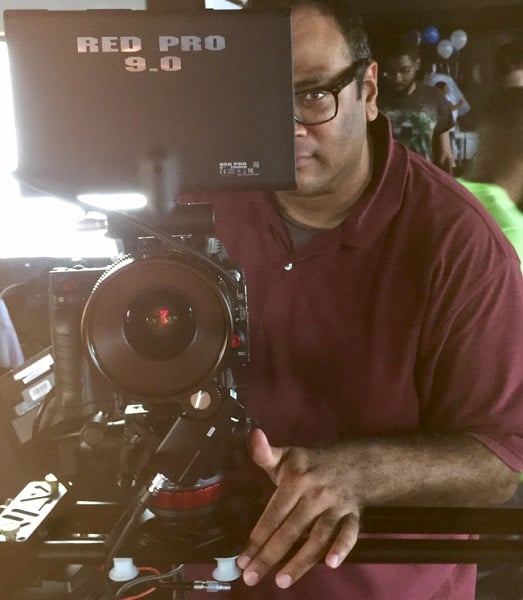
Cinematography lighting plays a large role in filmmaking. Done well, it creates a mood and atmosphere for the film. It tells the audience where to look. It can accentuate the emotional psychology of a scene and define the genre of the film.
Cinematography goes far beyond the basic three point light setup that most of us are familiar with. Three point lighting illuminates a scene. Cinematography lighting paints the scene with light.
The evolution of painting from flat-lit medieval pieces to the chiaroscuro techniques of the Renaissance work of Leonardo da Vinci, Rembrandt and Caravaggio was mirrored in the evolution of cinematography lighting. These chiaroscuro techniques use the contrasts of light and shadow to create the illusion of volume and depth in their subjects and greatly impact the mood and emotional connection of a scene.
Whereas the Renaissance artists had complete control of how they chose to represent light, the cinematographer must deal with light in the real world. This means the real-world properties of the strength of the light, the hardness or softness of the light source, and the shadows lights create must all be harnessed to create what the lighting director envisions.
To accomplish this shaping of light in cinematography requires an extensive knowledge of lighting equipment and techniques. In addition to the classic three point lighting setup (key, fill and backlight), cinematography lighting uses a variety of other lighting techniques.
Side lighting, which as the name implies, lights the actor or point of interest from the side. This can create a high-contrast dramatic effect and is a staple of film noire. It also is the closest to chiaroscuro lighting.
Hard lighting creates harsh shadows and is often used to draw attention to (i.e. spotlight) a specific actor or point of interest in a scene.
Soft lighting is noticeable for its absence of shadows and overall illumination where no particular actor or point of interest is highlighted.
High-key lighting creates no shadows and intense brightness. It is often used in commercials, sitcoms and film videos.
Low-key lighting has lots of shadows and is used to create a sense of mystery and suspense. It is often used in horror and thriller movies.
Natural lighting (also known as available or ambient lighting) is that which is in a scene before the addition of cinematographic lighting instruments. Barry Lyndon by Stanley Kubrick is famous for its use of ambient light.
Practical lighting comes from actual working light sources within a scene. These can include lamps, candles, TV sets, etc.
Motivated lighting is that which imitates a natural source within a scene but provides more illumination than that which comes from the natural, or practical, light source.
Bounce lighting is where illumination from a strong light source is redirected by ‘bouncing’ it off a reflector or shiny board to create fill lighting or otherwise soften and spread the light in a scene.
Besides the preceding lighting techniques which involve the placement of the lighting equipment, cinematographic lighting requires an extensive knowledge of lighting instruments themselves (HMI, LED, Tungsten, Halogen-Quartz, and Fluorescent) as well as the power requirements and rigging configurations of each.
On a film, three people are integral to the lighting seen on the screen. The film’s director provides their ideas for the visual look, mood and feel of the scene. The director of photography creates a lighting plan to achieve the film director’s vision. The gaffer executes the director of photography’s lighting plan and oversees the crew that implements the plan.
The next time you watch a movie; see if you can tell what type of lighting was used in each scene. Imagine where the lights were placed. Imagine what the same scene would look like if a different lighting technique was used. If you have access to lighting equipment, try experimenting to see if you can recreate the lighting effects from some of your favorite scenes. The biggest challenge you will face is to see what the camera will see, not what your eyes see. This requires practice and experience which means there’s no better time to start than now.
Film Lighting Basics Explained
Film Connection graduate Ananth Agastya (pictured above) Wartime Short Film Crewed by Students & Graduates
Film Connection screenwriting mentor Ana Bendaña talks organizing, trimming, and developing your screenplay.



